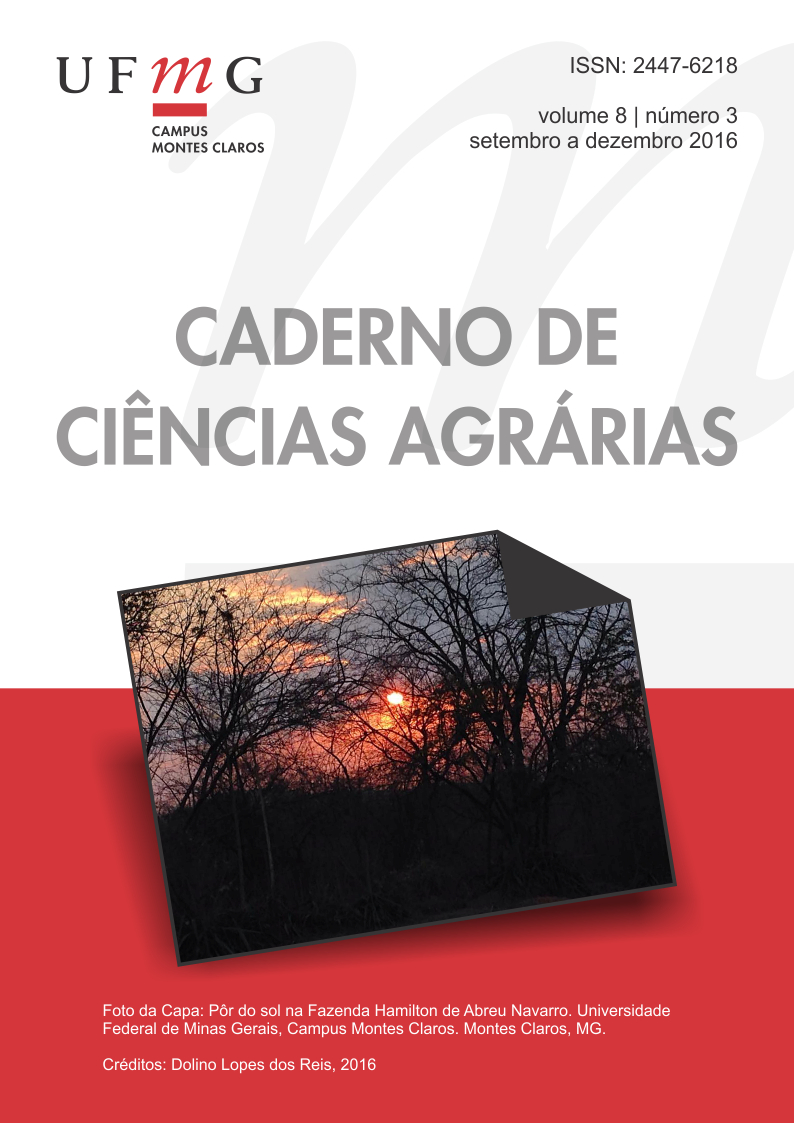Atividade antibacteriana e antioxidante de óleos essenciais cítricos com potencialidade para inclusão como aditivos em alimentos
Keywords:
Bactéria. Citrus. Conservantes de alimentos. Microbiologia de alimentos.Abstract
Indubitavelmente, os óleos essenciais atraem cada vez mais o interesse da população por sua eficiência orgânica beneficente. O presente trabalho avaliou o potencial antibacteriano e a atividade antioxidante dos óleos essenciais cítricos de Citrus aurantium var. dulcis (laranja doce), Passiflora edulis (maracujá) e Citrus reticulata v. tangerine (tangerina) frente a bactérias lácticas e patogênicas. Foram utilizadas bactérias lácticas de Streptococcus thermophilus e Lactobacillus delbrueckii ssp. bulgaricus e as bactérias patogênicas Escherichia coli, Staphylococcus aureus e Salmonella sp. Os óleos essenciais de Citrus aurantium var. dulcis, Passiflora edulis e Citrus reticulata v. tangerine foram adquiridos comercialmente. Foi realizado o screening da atividade antibacteriana, a determinação da Concentração Inibitória Mínima (CIM) e a Concentração Bactericida Mínima (CBM). A atividade antioxidante foi realizada pela metodologia de DPPH, e o tratamento de dados foi realizado com o software BioEstat. Os três óleos apresentaram efeitos inibitórios frente as bactérias patogênicas experimentadas, contudo os resultados foram discrepantes entre si. Com relação à CIM e a CBM, o óleo essencial cítrico de Citrus reticulata v. tangerine apresentou melhores resultados no controle da Salmonella e E. coli.Quanto a atividade antioxidante, os óleos essenciais de Citrus aurantium var. dulcis e Passiflora edulis apresentaram baixa atividade antioxidante, enquanto o óleo essencial cítrico de Citrus reticulata v. tangerine, não apresentou capacidade antioxidante significativa. Observa-se que os óleosdemonstraram atividade antimicrobiana com potencial para inclusão em alimentos, no entanto, estudos desta atividade na matriz alimentar demandam outras pesquisas para verificar a possível interferência desses óleos, em especial na viabilidade das bactérias lácticas.Downloads
References
ANDRADE, M.A. et al. Óleos essenciais de Cymbopogon nardus, Cinnamomum zeylanicum e Zingiber officinale: composição, atividades antioxidante e antibacteriana. Revista Ciência Agronômica, v.43, n.2, p.399-408, 2012.
BAKKALI, F. et al. Biological effects of essential oils–a review. Food and chemical toxicology, v. 46, n. 2, p. 446-475, 2008.
BEZERRA, L. M. D. et al. Atividade antibacteriana in vitro de fitoconstituintes sobre micorganismos do biofilme dentário. Revista Brasileira de Ciências da Saúde, v. 17, n. 1, p. 79-84, 2013.
BURT, S. A. Antibacterial activity of essential oils: potential applications in food [PhD thesis]. Utrech: Utrecht University, p. 94, 2007.
COUTO, M. A. L.; CANNIATTI-BRAZACA, S. G. Quantificação de vitamina C e capacidade antioxidante de variedades cítricas. Ciência e Tecnologia de Alimentos, v. 30, n.1, p. 15-19, 2010.
LEITE, M. P. et al. Behavioral effects of essential oil of Citrus aurantium L. inhalation in rats. Revista Brasileira de Farmacognosia, v. 18, n. 1, p. 661-666, 2008.
MIRANDA, G. S. et al. In vitro antibacterial activity of four plant species at different alcoholic contents. Revista Brasileira de Plantas Medicinais, v. 15, n. 1, p. 104-111, 2013.
MOTHANA, R. A.; LINDEQUIST, U. Antimicrobial activity of some medicinal plants of the island Soqotra. Journal of ethnopharmacology, v. 96, n. 1, p. 177-181, 2005.
NASCIMENTO, P. F. C. et al. Atividade antimicrobiana dos óleos essenciais: uma abordagem multifatorial dos métodos. Revista Brasileira de Farmacognosia, v. 17, n. 1, p. 108-113, 2007.
OLIVEIRA, T. L. C. et al. Antimicrobial activity of Satureja montana L. essencial oil against Clostridium perfringens type A inoculated in mortadela-type sausages formulated with different levels of sodium nitrite. International Journal of Food Microbiology, v. 144, n. 3, p. 546-555, 2011.
OUSSALAH, M. et al. Inhibitory effects of selected plant essential oils on the growth of four pathogenic bacteria: E. coli O157: H7, Salmonella typhimurium, Staphylococcus aureus and Listeria monocytogenes. Food control, v. 18, n. 5, p. 414-420, 2007.
TEIXEIRA, J. P. F.; MARQUES, M. O. M.; PIO, R. M. Caracterização dos óleos essenciais em frutos de nove genótipos de tangerina. Citrus Research & Technology, v. 35, n.1, p. 1-10, 2014.
SILVA, J. K. et al. Antioxidant activity of aqueous extract of passion fruit (Passiflora edulis) leaves: In vitro and in vivo study. Food Research International, v. 53, n. 2, p. 882-890, 2013.
SOLOMAKOSA, N. et al. The antimicrobial effect of thyme essencial oil, nisin, and their combination against Listea monocytogenes in minced beef durin refrigerated storage. Food Microbiology, v. 25, n. 1, p. 120-127, 2008.
RICKIE, S. C. et al. Alternatives to antibiotics: chemical and physical antimicrobial interventions and food-borne pathogen response. Poultry Science, v. 84, n. 4, p. 667-675, 2005.
ZERAIK, M. L. et al. Maracujá: um alimento funcional?. Revista Brasileira de Farmacognosia, v. 20, n. 3, p. 459-471, 2010.
Downloads
Published
How to Cite
Issue
Section
License
Authors who publish in this journal agree to the following terms:
The Copyright for articles published in this journal follow authorship. The articles are open access, with their own attributions, in educational and non-commercial applications.
The journal reserves the right to make regulatory, orthographic and grammatical changes in the originals, with the aim of maintaining the standard language and the credibility of the vehicle. It will respect, however, the writing style of the authors.
Changes, corrections or suggestions of conceptual order will be forwarded to the authors, when necessary. In such cases, the articles, once appropriate, should be submitted for further consideration.
The opinions issued by the authors of the articles are their sole responsibility.







